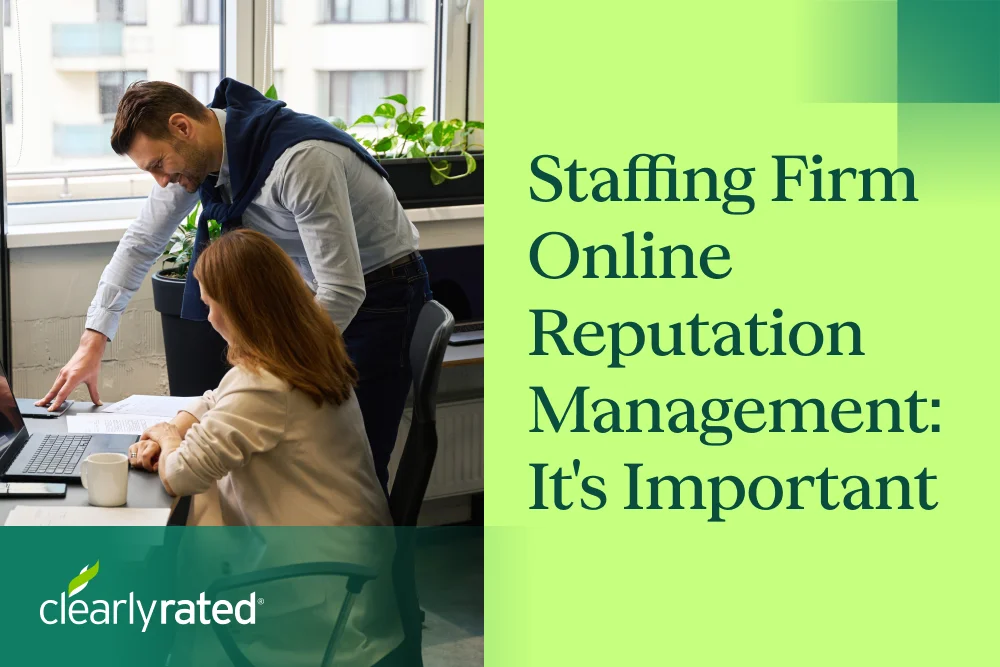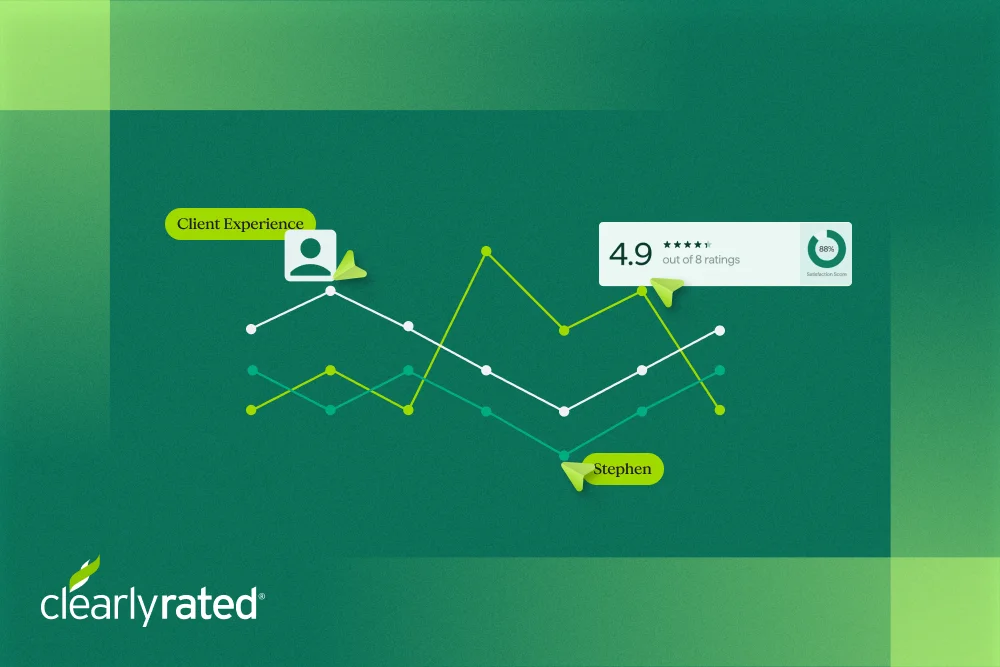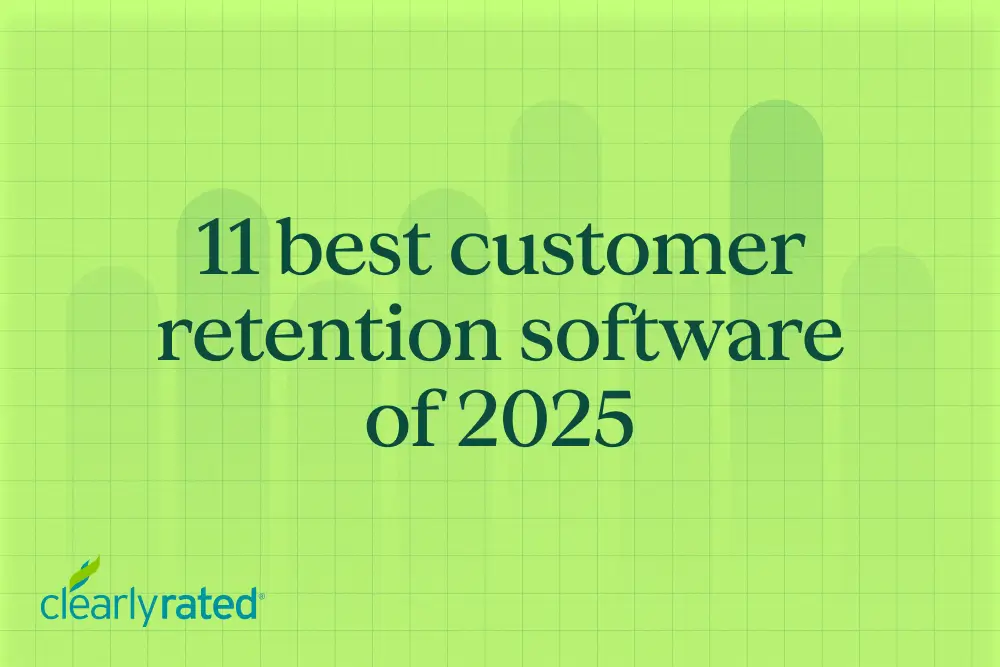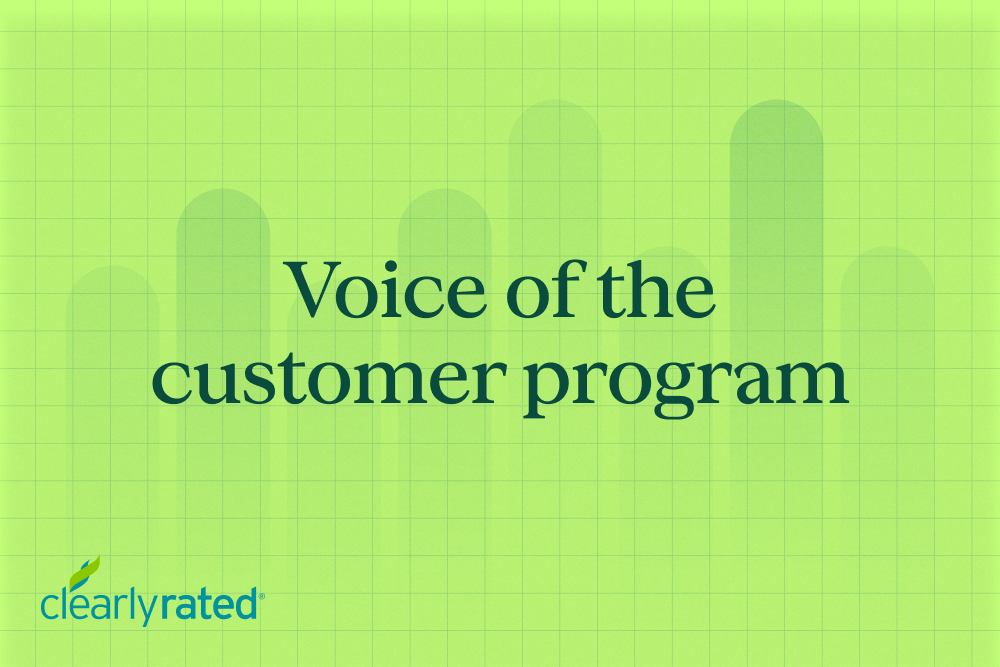Clearlyrated’s Diversity Equity and Inclusion Guide to a Thriving Workplace
%20in%20the%20Workplace.png)
Imagine a workplace where your ideas are valued, your background is celebrated, and opportunities are equal. Now, picture the opposite—where some employees are overlooked, bias influences promotions, and diversity is just a checkbox.
Which environment would you prefer?
This is why Diversity, Equity, and Inclusion (DEI) matters. More than a buzzword, it creates fair, inclusive, and high-performing workplaces. From diverse hiring to pay equity and fostering belonging, DEI helps all employees thrive.
In this blog, we'll explore DEI, why it matters, and how to implement and measure strategies for long-term success.
What is diversity, equity, & inclusion?
Once celebrated as a competitive advantage, many companies proudly embraced DEI to attract talent and foster inclusive cultures. However, shifting political and social climates have led some businesses to scale back or abandon these initiatives altogether.

But what exactly is DEI, and why does it matter? It goes by many names, including D&I, EDI, I&D, DEIB(Diversity, Equity, Inclusion, and Belonging) and JEDI(Justice, Equity, Diversity & Inclusion), each highlighting key aspects of inclusion and equity.
Let's break it down:
- Diversity is the mix of unique identities, backgrounds, and experiences within an organization, including race, gender, age, disability, and socioeconomic status.
- Equity ensures fair access to opportunities by recognizing individual needs. While equality offers the same resources to all, equity provides tailored support to level the playing field.
- Inclusion nurtures a culture where every employee feels valued, heard, and empowered—not just represented but truly embraced.
- Belonging is the sense of security and support that comes from feeling accepted, included, and valued within a group or workplace.
Diversity: More Than Just Representation
Diversity in the workplace encompasses more than just representation. It involves recognizing and valuing individuals' myriad differences in an organization. Understanding these dimensions can enhance collaboration, innovation, and inclusivity.
Dimensions of Diversity:
- Internal Diversity: These are inherent characteristics individuals are born with, such as race, gender, age, physical abilities, ethnicity, and cultural identity.
- External Diversity: This encompasses personal experiences and choices, including education, socioeconomic background, marital and parental status, religious beliefs, and life experiences.
- Organizational Diversity: Differences arising from one's role within a company, such as job function, hierarchical level, department, or union affiliation.
- Worldview Diversity: The spectrum of perspectives shaped by cultural, philosophical, religious, and personal experiences.
Another perspective categorizes diversity into:
- Visible Diversity: Observable traits like race, age, and gender.
Invisible Diversity: Non-obvious attributes such as educational background, sexual orientation, and socioeconomic status.
Workplace diversity broadens your talent pool, deepens customer insights, and boosts profits while fostering a more innovative, engaging, and stable work environment. Studies show that companies with high gender diversity are 21% more likely to earn above-average profits.
Embracing diverse hiring practices attracts skilled candidates from varied backgrounds, reducing turnover and fueling growth. Diversity in top management makes employees 57% more effective in collaboration.
Diverse workplaces see a 19% lower turnover rate, all contributing to an enhanced company culture and positive brand reputation. A diverse workforce also enables companies to understand better and serve a varied customer base, giving them a competitive edge.
Equity: Fairness in Opportunity and Access
Equality means treating every new hire the same by providing identical resources. For example, imagine a company that gives every new employee the same training manual, online courses, and company policies, regardless of their background. This approach assumes that identical resources will yield identical outcomes for everyone.
Equity, however, recognizes that not all employees start at the same place. While the company still provides the standard training materials, it offers additional mentorship, tailored training sessions, and extra support for those facing less experience or language barriers. This ensures that all employees have a fair chance to succeed.
Inclusion: Creating a Sense of Belonging
Harvard Business School professor and organizational behavioral scientist Amy Edmondson states psychological safety is a key factor in healthy teams. Research indicates that nearly one in four employees leave their jobs because they don't trust their employers. An equal number doubt whether their workplace provides a safe and supportive environment.

Psychological safety in the workplace has profound benefits: It boosts employee engagement by fostering active participation, promotes inclusivity by ensuring that all backgrounds are respected, sparks creativity by allowing for a free exchange of ideas, and enhances well-being by reducing workplace stress.
For example, NASA introduced its Safety Culture program after the Columbia disaster, encouraging employees to speak up without fear. Additionally, companies like Google encourage innovation with policies like " 20% time," allowing employees to experiment.
Psychological safety also cultivates brand ambassadors, reduces turnover by ensuring loyalty, and improves team performance by enabling creativity, inclusivity, and well-being to thrive.
The Business Case for DEI
Investing in DEI is not merely a moral decision; it's a strategic advantage that fuels business growth and resilience. Here are some insightful reasons why a robust DEI framework can transform your organization:
Catalyst for Innovation:
A diverse team brings together unique perspectives that challenge the status quo. This melting pot of ideas sparks creativity and drives breakthrough innovations, enabling your organization to develop cutting-edge solutions and stay ahead of competitors.
Magnet for Top Talent:
Professionals today are drawn to workplaces that value diversity and inclusivity. By creating an environment where every voice is heard, your organization can attract highly skilled individuals eager to contribute and make a meaningful impact.
Enhanced Employee Engagement and Retention:
Employees who feel valued and understood are more motivated and committed. An inclusive culture boosts morale and productivity and reduces turnover, saving your organization time and resources while nurturing long-term loyalty.
Expanded Market Insight:
A workforce that reflects the diversity of your customer base provides invaluable insights into varied consumer needs. This alignment helps tailor products and services that resonate with a broader audience, driving customer satisfaction and market growth.
Resilient Decision-Making:
Incorporating a range of perspectives leads to more balanced and informed decisions. DEI practices help prevent groupthink, fostering an environment where critical analysis and creative problem-solving thrive, ensuring your organization can adeptly navigate challenges.
Strengthened Brand Reputation:
Companies that champion DEI are recognized as ethical, progressive, and socially responsible. This positive brand image builds trust with consumers, investors, and the broader community, enhancing your organization's credibility and competitive edge.
When these elements come together, they create a robust business case for DEI. Embracing diversity, equity, and inclusion cultivates a more dynamic and innovative workplace and positions your organization as a leader in a rapidly evolving marketplace.
7 Strategies to Implement DEI in the Workplace
Creating a robust DEI strategy is crucial for businesses seeking success in today's environment. Here's a comprehensive guide to developing an effective DEI program.
Leadership Commitment and Accountability
An effective DEI strategy starts at the top. HR teams must make a compelling case to leadership by demonstrating how DEI initiatives drive higher employee retention and enhance workplace culture. When executives are held accountable for measurable DEI outcomes, the organization benefits from a unified commitment to change.
Tools like Clearlyrated can provide real-time feedback and data, ensuring that leadership remains actively engaged in monitoring progress and fostering an inclusive environment.
Leadership commitment is further strengthened by establishing safe spaces where employees can openly share their experiences, ideas, and concerns without fear of retribution. This culture of open dialogue not only deepens trust across all levels of the organization but also provides valuable insights that drive ongoing DEI improvements.
Training and Education for Employees
Empowering employees through education is key to transforming workplace culture. Comprehensive DEI training, from unconscious bias workshops to role-specific sessions, ensures that every team member understands the importance of inclusion and their role in promoting it.
Ongoing educational initiatives help build a shared language around DEI, encouraging individuals to challenge biases and contribute positively to the organization's culture. When well-informed and equipped with the right tools, employees become vital agents of change.
DEI Policies and Practices
Clear policies and structured practices are essential for embedding DEI into the fabric of an organization. Conducting demographic assessments and leveraging DEI surveys establishes a baseline for current representation and highlights areas for improvement.
Setting measurable goals and utilizing HR dashboards to track key metrics ensures that progress is visible and continuously refined. These strategic policies create a framework for long-term success, transforming DEI from an aspirational idea into a practical, data-driven process.
Inclusive Hiring and Promotion Practices
Attracting and retaining diverse talent is a cornerstone of a robust DEI strategy. Organizations must adopt inclusive hiring and promotion practices by partnering with diverse recruitment agencies, participating in targeted job fairs, and setting specific diversity goals. Revising recruitment processes, such as implementing blind resume screenings and diverse interview panels, ensures that all candidates are evaluated based on their skills and potential rather than their background.
Audit all internal and external communications, from job postings to social media, to ensure inclusive language and imagery. Train managers and team leaders on best practices for maintaining a respectful and welcoming dialogue. This approach expands the talent pool and cultivates a workforce that mirrors the global community.
Pay Equity and Transparency
Fair compensation practices are critical to building trust and fostering a culture of inclusion. Organizations can use data and analytics to identify discrepancies in salaries and promotions, enabling them to take corrective action. Transparent pay practices, such as using standardized offer calculators and openly sharing compensation ranges, demonstrate a genuine commitment to fairness.
When employees see that pay equity is a priority, it strengthens their engagement and reinforces the overall integrity of the workplace. Review your employee benefits to address the diverse needs of your workforce. Consider flexible holidays, financial wellness programs, and inclusive social events catering to various cultural, personal, and economic circumstances.
Employee Resource Groups (ERGs)
Employee resource groups are potent catalysts for cultivating a sense of belonging and driving DEI initiatives from within. ERGs provide a platform for individuals with shared identities to connect, share insights, and support one another. These groups help foster an inclusive culture and serve as a vital channel for employee feedback and continuous improvement.
Nurturing ERGs, organizations can ensure that diverse voices are heard and that DEI efforts remain aligned with the evolving needs of their workforce.
Continuous Improvement and Adaptation
Finally, establishing clear DEI metrics and setting measurable goals is essential for tracking progress, celebrating successes, and pinpointing areas for improvement. Organizations can continuously refine their strategies by leveraging HR dashboards, demographic assessments, and DEI surveys. Regular progress reports and actionable insights should be shared with leadership and the workforce, ensuring DEI efforts remain agile and responsive to change.
This commitment to data-driven evolution transforms DEI from an aspirational idea into a practical, ongoing improvement process.
Wrapping Up
The evolving global conversation on DEI reveals that inclusion is a dynamic, multifaceted journey. Drawing on regional insights, organizations can craft resilient, innovative workplaces. A robust DEI strategy is more than a moral imperative; it's a strategic asset that fuels innovation, attracts top talent, and enhances overall business resilience. Embracing DEI transforms workplace culture, driving sustainable success in a dynamic, diverse global landscape.
Clearlyrated can be your partner in your DEI journey. Talk to our experts on our product can help you drive this transformation.
FAQs
1. What is the difference between diversity and inclusion?
Diversity refers to the range of differences among people in an organization, such as race, gender, age, and background, while inclusion is about creating an environment where everyone feels respected, valued, and able to contribute fully.
2. How can small businesses implement DEI initiatives?
Due to resource constraints, small businesses face unique challenges in launching comprehensive DEI initiatives. However, they can still take meaningful first steps by setting clear, achievable DEI goals and using Clearlyrated surveys to capture employee feedback. These insights can help pinpoint areas for improvement and measure progress over time.
3. Why is equity significant in the workplace?
Equity is crucial because it ensures that all employees have the same opportunities for growth, compensation, and advancement, regardless of their background. It goes beyond simple equality by addressing historical imbalances and systemic barriers.
4. How can leaders promote inclusivity?
Leaders can promote inclusivity by setting the tone at the top and actively engaging with their teams. This includes establishing measurable DEI objectives, encouraging open dialogue, and modeling inclusive behavior. With Clearlyrated's real-time feedback and survey analytics, leaders can monitor the sentiment across their workforce, identify areas where inclusion may be lacking, and make data-informed decisions to foster a more inclusive culture.
5. What are common DEI challenges, and how can they be addressed?
Common DEI challenges include resistance to change, unconscious bias, and communication gaps. These issues can often lead to a lack of engagement or even distrust among employees.
FAQs


.png)






%5B1%5D.webp)







.png)











_%20The%20Ultimate%20Guide.png)





.png)






























.png)

%20and%20how%20can%20you%20increase%20it.png)
_%20A%20Step-by-Step%20Guide.png)

.png)
.png)




_.png)



%20in%202028.png)


_%20The%20Ultimate%20Guide%20(2024).png)











